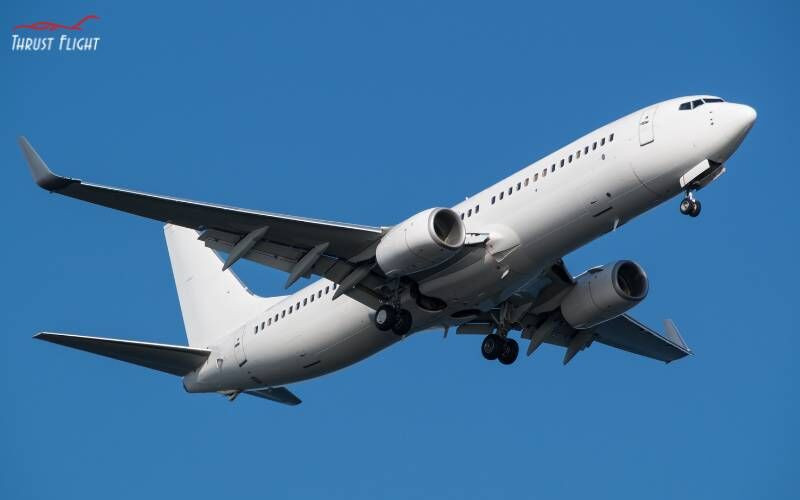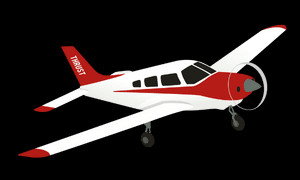The average cruising speed of a commercial passenger airplane typically ranges from 880 to 926 kilometers per hour (km/h), which translates to approximately 475 to 500 knots or 547 to 575 miles per hour (mph). While these figures give a general idea, the actual speed at which a commercial airplane flies is influenced by a multitude of factors.
Before we delve into these influencing elements, let’s look at the typical cruising speeds of several common commercial aircraft models:
Cruising Speeds of Common Commercial Airplanes
Below is a table detailing the cruising speeds of various commercial airplanes. Speeds are provided in Mach number, knots, and miles per hour for a comprehensive understanding.
| Aircraft Type | Cruise Mach | Knots | MPH |
|---|---|---|---|
| Boeing 737 MAX | Mach 0.79 | 453 | 521 |
| Airbus A320neo | Mach 0.78 | 450 | 518 |
| Boeing 747-8 | Mach 0.855 | 490 | 564 |
| Boeing 787 Dreamliner | Mach 0.85 | 488 | 562 |
| Airbus A380 | Mach 0.85 | 488 | 562 |
| Embraer EMB-145 | Mach 0.78 | 450 | 518 |
| Concorde SST (Retired) | Mach 1.75 | 1,165 | 1,341 |
Factors Influencing Airplane Speed
Understanding airplane speed is more complex than simply looking at a speedometer in a car. Airplanes operate within the atmosphere, a dynamic medium that is constantly in motion. Several key factors dictate how fast a commercial airplane travels relative to the ground and through the air.
Ground Speed vs. Airspeed: What’s the Difference?
For passengers and airline route planners, ground speed is the most relevant measurement. Ground speed represents the airplane’s speed relative to a fixed point on the Earth’s surface. It’s essentially how quickly the airplane is moving from one location to another, much like the speed of a car on a highway. A strong tailwind will increase ground speed, while a headwind will decrease it.
However, from a pilot’s and aircraft design perspective, airspeed is paramount. Airspeed is the speed of the airplane relative to the air mass it is flying through. It’s the crucial factor determining the aerodynamic forces acting on the aircraft, particularly lift over the wings. There are different types of airspeed:
- Indicated Airspeed (IAS): This is the speed shown on the airplane’s airspeed indicator. It’s based on the pressure difference measured by the pitot-static system but doesn’t account for air density variations.
- True Airspeed (TAS): TAS is the IAS corrected for air density and temperature. As altitude increases, air density decreases, and TAS becomes higher than IAS for the same indicated airspeed. TAS provides a more accurate measure of the airplane’s actual speed through the air.
 Commercial airplane flying at takeoff speed
Commercial airplane flying at takeoff speed
Mach Number and the Sound Barrier
Commercial jets are designed to fly at high speeds, but they are limited by the speed of sound, known as Mach 1. Exceeding Mach 1 can lead to the formation of shockwaves, dramatically increasing drag and potentially causing control issues.
The Maximum Mach Number (Mmo) is a design limitation that specifies the highest Mach number an airplane can safely operate at. A machmeter in the cockpit helps pilots monitor their speed in relation to Mach number, ensuring they stay within safe operational limits. Commercial airplanes typically cruise at subsonic speeds, below Mach 1, to maintain efficiency and stability.
Altitude and Air Density
Air density decreases significantly with altitude. At typical cruising altitudes (around 30,000-40,000 feet), the air is much thinner than at sea level. Jet engines operate more efficiently in this thinner air, but wings require a certain airspeed to generate sufficient lift. Therefore, airplanes must fly faster at higher altitudes to maintain lift and avoid stalling.
Weather Conditions
Wind, as mentioned earlier, directly impacts ground speed. Headwinds reduce ground speed, increasing flight time and fuel consumption, while tailwinds have the opposite effect. Turbulence can also necessitate speed adjustments for passenger comfort and aircraft safety.
Aircraft Design and Efficiency
The design of an aircraft plays a crucial role in its speed capabilities and efficiency. Factors like wing shape, engine power, and overall aerodynamics determine the optimal cruising speed. While different aircraft models have slightly varying cruise speeds, most modern airliners operate within a relatively narrow speed range for optimal fuel efficiency and performance.
Measuring Airplane Speed: Knots and Mach
In aviation, speed is commonly measured in knots (kts). One knot is equal to one nautical mile per hour, and a nautical mile (NM) is slightly longer than a statute mile (approximately 1.15 statute miles). This system is used internationally for air and sea navigation.
For high-speed flight, especially for jet aircraft, Mach number is also used. Mach number is the ratio of the airplane’s speed to the local speed of sound. Mach 1 represents the speed of sound, Mach 0.85 means 85% of the speed of sound, and so on.
Speed Variations During Flight
Airplanes don’t maintain a constant speed throughout a flight. Different phases of flight require different speed profiles for safety and efficiency.
Climb Speed
During takeoff and initial climb, the priority is to gain altitude quickly. Initially, a best rate of climb speed is used to maximize vertical ascent in the shortest time. Once at a safe altitude, pilots typically transition to a more efficient climb speed, trading some climb rate for increased forward speed and better fuel economy during the continued climb to cruising altitude.
Cruise Speed
The cruise phase is where airplanes spend the majority of their flight time. Pilots set a cruise speed based on factors like fuel efficiency, flight time optimization, and air traffic control requirements. As seen in the aircraft table, most commercial airliners have similar cruise speeds in the Mach 0.8 to 0.85 range, balancing speed and fuel consumption.
Descent Speed
During descent, airplanes need to reduce altitude while managing speed. A cruise descent involves reducing engine thrust and allowing the airplane to descend gradually without excessive speed buildup. As the airplane approaches the airport and descends below 10,000 feet, speed is reduced to 250 knots or less, as mandated by air traffic regulations. During the final approach for landing, speeds are further reduced to around 150 knots or even lower, utilizing flaps and other high-lift devices to maintain control at slower speeds.
Supersonic Commercial Flight: The Concorde and the Future
No discussion about airplane speed is complete without mentioning the Concorde. This iconic aircraft was the only supersonic commercial airliner to operate successfully. Flying at a cruise speed of Mach 1.75, the Concorde could cross the Atlantic in under three hours, a feat unmatched by any other commercial airplane since its retirement in 2003.
Despite its groundbreaking speed, the Concorde faced challenges, including high operating costs, noise restrictions due to sonic booms over land, and environmental concerns. These factors ultimately led to its retirement.
However, the dream of supersonic commercial travel is being rekindled. Companies like Boom Supersonic are actively developing new supersonic transport aircraft (SSTs) with advancements in technology aimed at reducing sonic boom impact and improving fuel efficiency. While still in development, these new SST designs hold the potential to significantly reduce flight times in the future, potentially bringing back supersonic speeds to commercial aviation.
In Conclusion
The speed of a commercial airplane is a dynamic and multifaceted topic. While average cruising speeds fall within a defined range, numerous factors, from atmospheric conditions to aircraft design and flight phase, constantly influence the actual speed. Understanding these factors provides a deeper appreciation for the complexities of air travel and the remarkable engineering that enables us to fly across the globe.
 Thrust Flight Piper Archer
Thrust Flight Piper Archer 